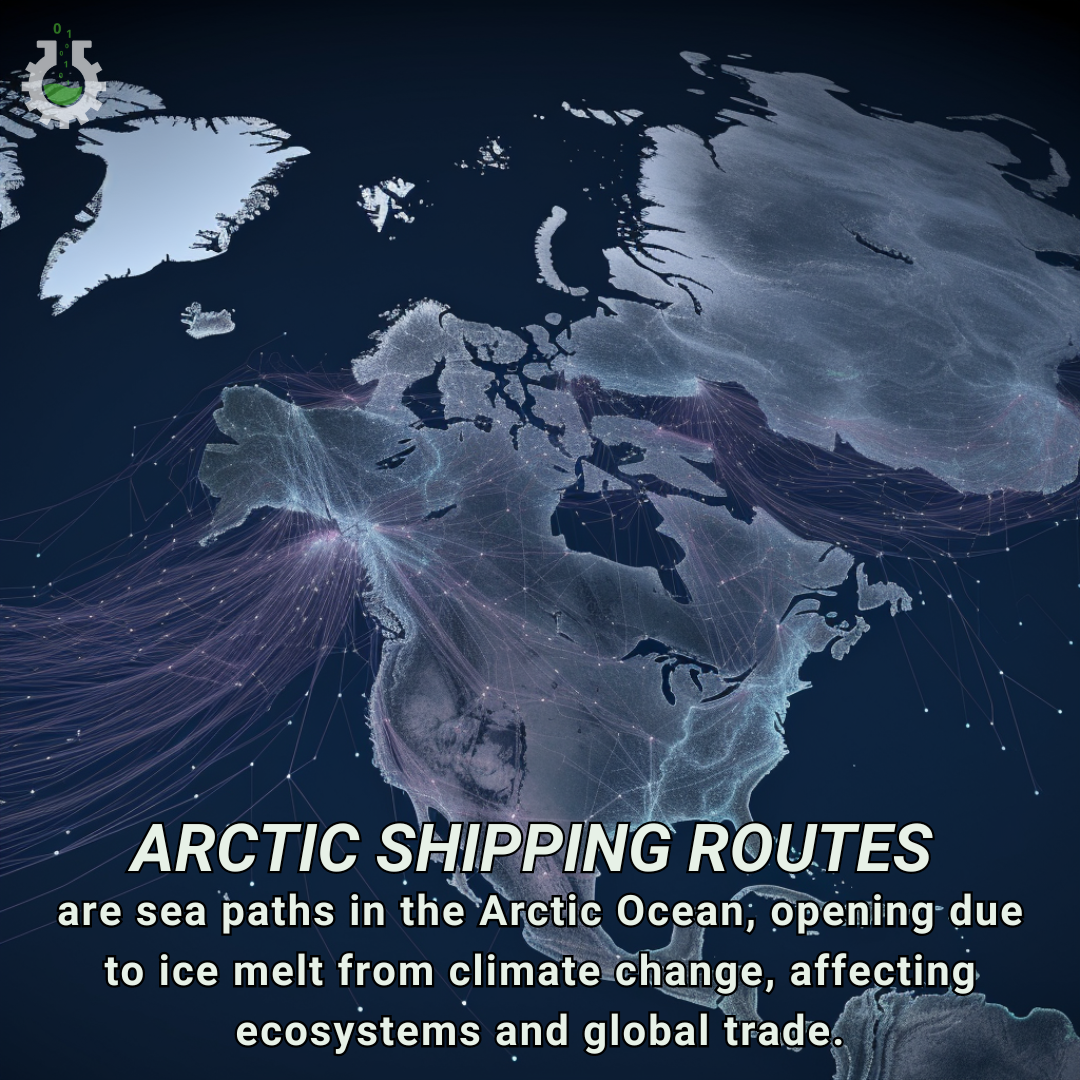July 2, 2024
Climate Change Poster Collection of the Day – Arctic Shipping Routes
Book a Demo
Today’s Climate Change Poster Collection highlights Arctic Shipping Routes, refer to navigable passages through the Arctic Ocean, primarily the Northwest Passage through the Canadian Arctic Archipelago and the Northern Sea Route along the Russian coast. These routes have historically been impassable due to thick, year-round ice cover. However, as the planet warms, the Arctic is undergoing some of the most dramatic changes observed anywhere on Earth. The region, long characterized by its impenetrable ice and inhospitable conditions, is now experiencing unprecedented melting due to climate change. This transformation is opening up new shipping routes that promise to revolutionize global trade but also pose significant environmental and geopolitical challenges.
The Arctic ice cap has been shrinking at an alarming rate, with the summer sea ice extent decreasing by about 13% per decade since the late 1970s. This reduction in ice cover is making previously inaccessible areas navigable. These routes offer a significantly shorter passage between major markets in Asia, Europe, and North America, potentially reducing shipping times by up to 40% compared to traditional routes through the Suez or Panama Canals.
However, the opening of Arctic shipping routes is a double-edged sword. On one hand, it presents economic opportunities by reducing transit times, fuel consumption, and shipping costs. On the other hand, it raises significant environmental concerns. The Arctic is a fragile ecosystem, home to unique wildlife and indigenous communities whose way of life is intricately tied to the natural environment. Increased shipping traffic brings the risk of oil spills, ship strikes on marine mammals, and the introduction of invasive species, all of which could have devastating effects on the local ecosystem.
Moreover, the geopolitical landscape of the Arctic is becoming increasingly complex. As the ice recedes, nations bordering the Arctic are vying for control over these new shipping lanes and the vast untapped natural resources beneath the Arctic seabed, such as oil, gas, and minerals. This competition is heightening tensions and could lead to conflicts over territorial claims and maritime boundaries.
In addition to these challenges, the infrastructure to support increased shipping in the Arctic is currently lacking. Ports, search and rescue capabilities, and environmental monitoring systems are sparse, making navigation in these waters risky. The harsh and unpredictable weather conditions further complicate matters, posing dangers to both crew and cargo.
To mitigate these risks, international cooperation and stringent regulations are essential. The International Maritime Organization (IMO) has adopted the Polar Code, which sets mandatory standards for ships operating in polar waters, including requirements for vessel safety, crew training, and pollution prevention. However, enforcement and compliance remain critical issues.
The future of Arctic shipping routes is inextricably linked to the broader context of climate change. While the opening of these routes symbolizes the profound and far-reaching impacts of a warming planet, it also underscores the urgent need for sustainable practices and policies. Balancing economic interests with environmental protection and indigenous rights will be crucial in navigating the complex and evolving landscape of the Arctic.
The melting Arctic ice is transforming global shipping routes, offering both opportunities and challenges. As we navigate this new frontier, it is imperative to adopt a holistic and collaborative approach that prioritizes the health of the Arctic ecosystem, respects the rights of indigenous communities, and ensures the safety and sustainability of maritime operations. The story of Arctic shipping routes is a stark reminder of the interconnectedness of our world and the far-reaching consequences of climate change.
Discover an inspiring collection of climate change poster.



